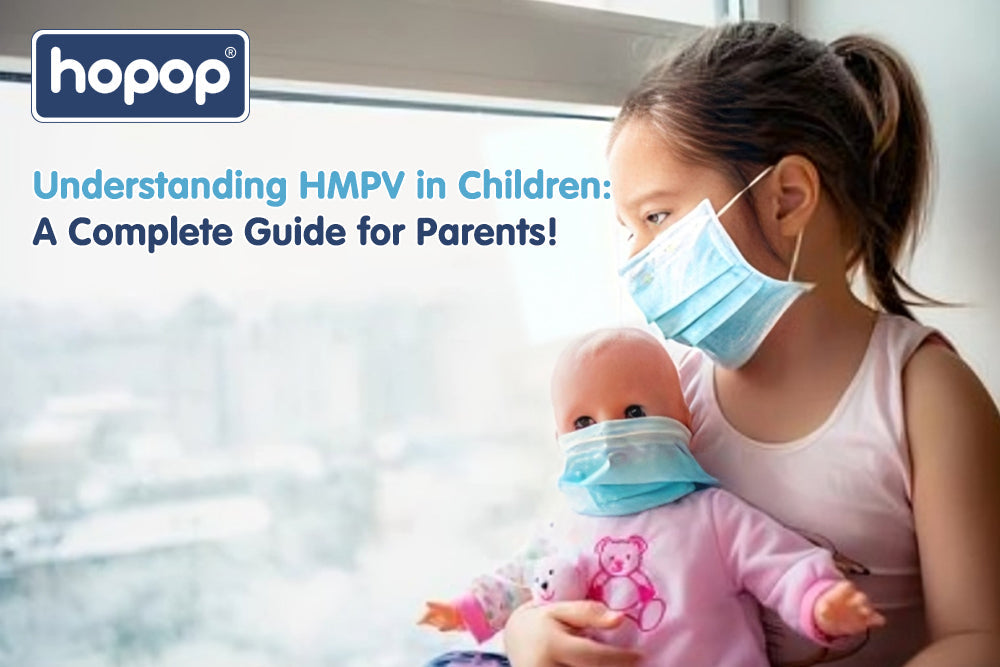Understanding HMPV in Children: A Comprehensive Guide for Parents

As parents, we want to ensure the health and well-being of our children, especially when it comes to respiratory illnesses. One such virus that has gained attention in recent years is the Human Metapneumovirus (HMPV), a common cause of respiratory infections in children. In this comprehensive guide, we'll explore the ins and outs of HMPV, equipping you with the knowledge to better understand and manage this condition.
What is HMPV?

HMPV is a respiratory virus that belongs to the Paramyxoviridae family, closely related to the respiratory syncytial virus (RSV). It was first identified in the Netherlands in 2001 and has since been recognized as a significant cause of respiratory illness in both children and adults.
Unlike some other respiratory viruses, HMPV is not as well-known or widely discussed, which can make it challenging for parents to navigate. However, understanding the characteristics of HMPV and how it differs from other respiratory infections is crucial for providing the best care for our little ones.
Symptoms of HMPV in Children

The symptoms of HMPV in children can vary in severity, ranging from mild cold-like symptoms to more severe respiratory distress. The most common signs of HMPV infection include:
- Cough
- Runny nose
- Fever
- Sore throat
- Difficulty breathing
- Wheezing
- Shortness of breath
In some cases, HMPV can also lead to more severe complications, such as pneumonia or bronchiolitis, particularly in high-risk groups like infants, young children, and those with underlying medical conditions.
Transmission and Risk Factors
HMPV is primarily transmitted through respiratory droplets, similar to how the common cold or flu spreads. The virus can be passed from person to person through coughing, sneezing, or close contact with infected individuals. Children are especially vulnerable to HMPV, as their immune systems are still developing, and they may not have built up immunity to the virus.
Certain factors can increase the risk of HMPV infection in children, including:
- Age (infants and young children are more susceptible)
- Underlying medical conditions (e.g., chronic lung disease, congenital heart disease)
- Weakened immune systems (e.g., due to cancer treatment or immunodeficiency disorders)
- Exposure to environmental pollutants or tobacco smoke
Understanding these risk factors can help parents take proactive measures to protect their children and seek medical attention if necessary.
Diagnosis and Treatment

If you suspect your child may have HMPV, it's essential to consult with a healthcare provider. The diagnosis typically involves a combination of clinical symptoms and laboratory testing, such as a nasal or throat swab to detect the presence of the virus.
In most cases, the treatment for HMPV in children is primarily supportive, focusing on managing the symptoms and ensuring the child's comfort. This may include:
- Providing plenty of rest and fluids
- Using over-the-counter medications to alleviate fever, cough, or congestion
- Monitoring for signs of respiratory distress and seeking medical care if necessary
In severe cases, hospitalization may be required, and healthcare providers may administer additional treatments, such as oxygen therapy or antiviral medications, depending on the child's specific needs.
Prevention and Long-Term Effects
Preventing the spread of HMPV is crucial, especially for high-risk children. Practicing good hygiene, such as frequent handwashing, covering coughs and sneezes, and avoiding close contact with sick individuals, can help reduce the risk of transmission.
While the long-term effects of HMPV in children are still being studied, some research suggests that the virus may contribute to the development of chronic respiratory issues, such as asthma or recurrent wheezing. Regular follow-up care and monitoring with a healthcare provider can help identify and manage any potential long-term complications.
HMPV vs. Other Respiratory Infections
It's important to note that HMPV shares some similarities with other respiratory viruses, such as RSV and influenza, but there are also distinct differences. Understanding these distinctions can help parents better recognize the symptoms and seek appropriate medical care.
For example, HMPV is generally associated with milder symptoms compared to RSV, which is known for causing more severe respiratory distress in young children. Additionally, HMPV tends to have a longer incubation period and a more gradual onset of symptoms compared to the rapid progression seen in influenza.
Conclusion
HMPV is a respiratory virus that can have a significant impact on the health and well-being of children. By understanding the symptoms, transmission, and risk factors associated with HMPV, parents can be better equipped to recognize the signs, seek timely medical attention, and take proactive measures to protect their little ones.
Remember, if your child experiences severe symptoms, such as difficulty breathing, high fever, or persistent respiratory distress, it's crucial to seek immediate medical care. With the right information and support, we can navigate the challenges of HMPV and ensure the best possible outcomes for our children.
-
Posted in
baby care, cold & flu care














